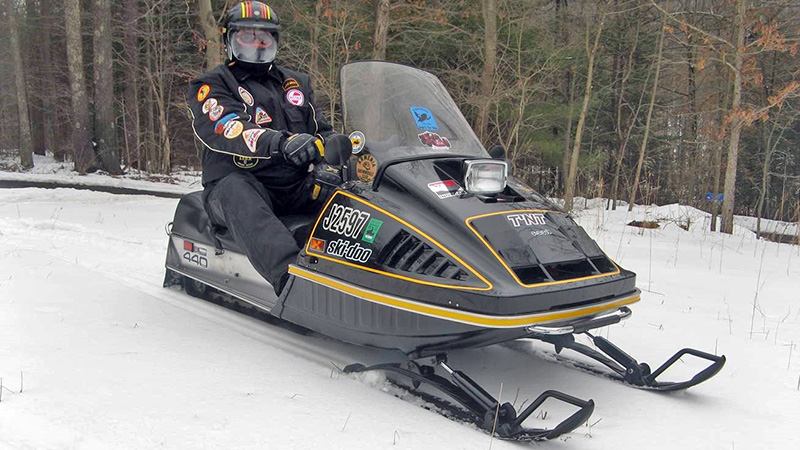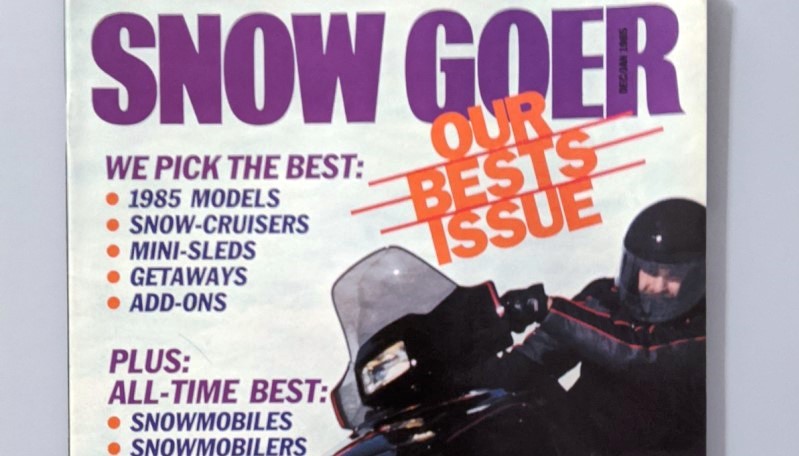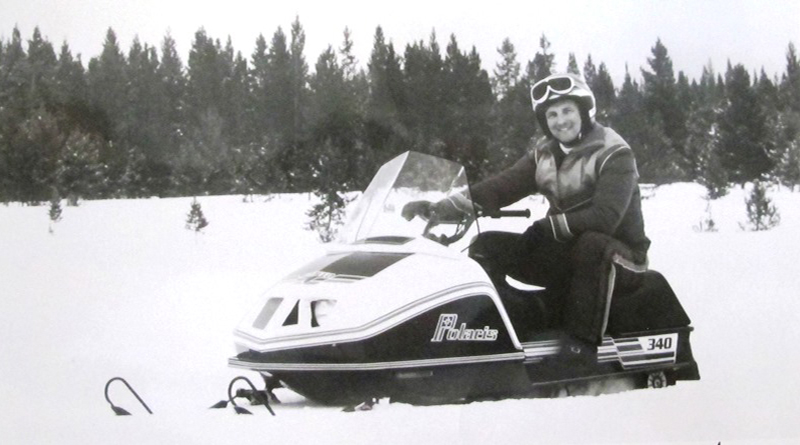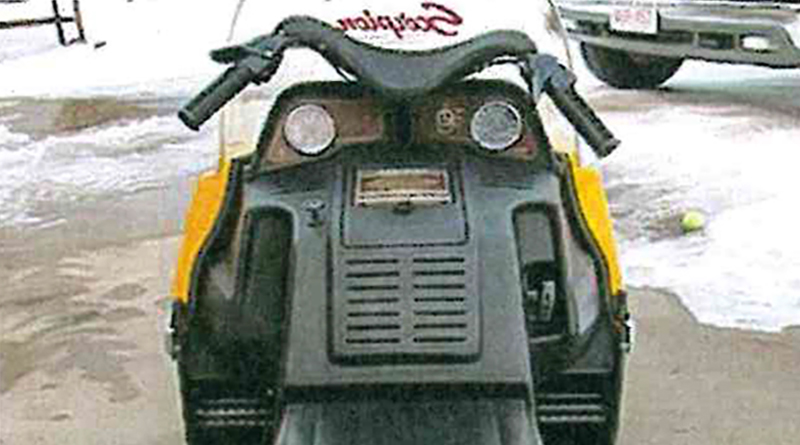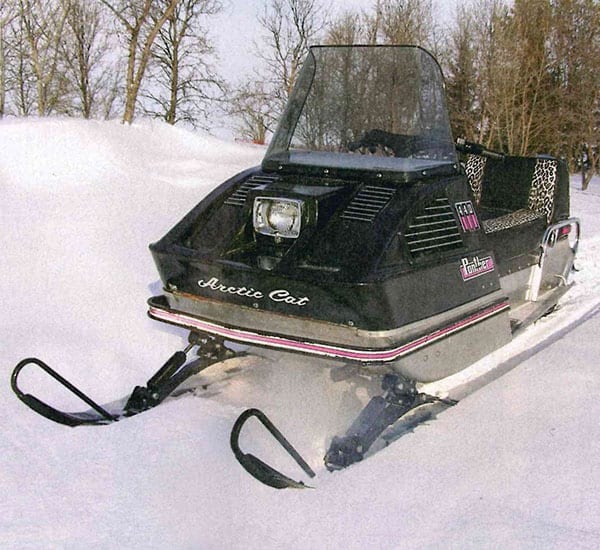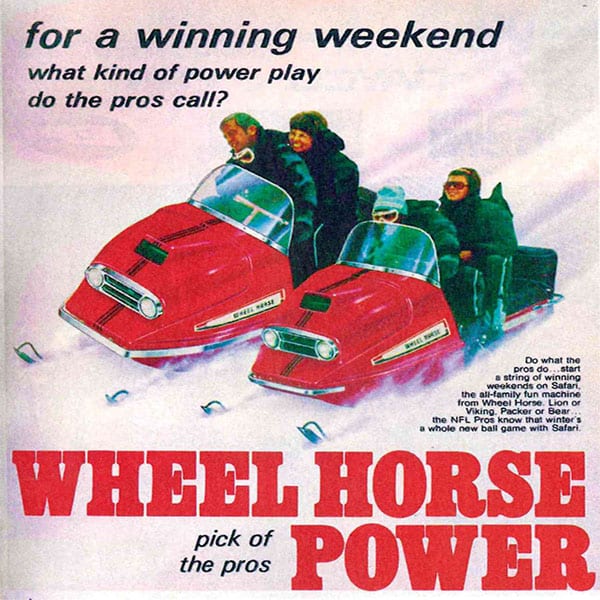Snow Goer magazine was launched as the first national snowmobile magazine 50 years ago. To celebrate, Snow Goer is taking readers on a volume-by-volume walk through the history of snowmobiling, as captured on the magazine’s pages. Below is the review of the 1969-70 publishing season. Other years will be also be published — use SG@50 in the search bar on the website to find them. Here’s a link to the opening section plus links to the 1966-67 section, the 1967-68 section, the 1968-69 section, the 1969-70 section, the 1970-71 section, 1971-72 section, the 1972-73 section, the 1973-74 section, the 1974-75 section and the 1975-76 section.
1976-77
The biggest news for 1977 was Kawasaki’s official entry into the snowmobile business. After sniffing around the market for a couple of years, Kawasaki purchased Sno-Jet and, for a year, had Arctic Cat build its Kawasaki Sno-Jet snowmobiles before starting its own production.

There were also many new or significantly upgraded sleds for 1977. Scorpion launched its sporty Sting 440, Polaris added liquid cooling to the TX to make the TX-L, Yamaha’s Exciter 440 got better clutching and the Massey Whirlwind 440 had a notably improved suspension. Plus the Kawasaki Sno-Jet models got “60 ways better,” with 60 little improvements that added up to a better snowmobile.
“The TX-L 340 just plain out-performs any other production sled we have ridden, any size, any color,” Snow Goer editors wrote in one review, and in another said, “To say the Exciter is the best Yamaha snowmobile that we’ve ever tested would be an understatement. It’s also one of the best snowmobiles that we’ve tested to date. No qualifiers.”
New was the Snow Goer Endurance 1000 test. Six manufacturers were invited to bring two 1976 machines to Michigan’s U.P. for a five-day, 1,000-mile torture test. Five factories showed up, but two pulled out due to various issues, meaning only the Polaris TX 500, Scorpion Whip 440 and John Deere Cyclone 340 completed the full test.
Mother Nature cooked up her own plans, as temperatures reached 54 degrees during the test. On the first day, the sleds were each driven in heavy rain for more than 600 laps around a quarter-mile oval at a local college. Snow overnight helped, but after 280 miles the track was shot, so testing moved to the Ironwood Olympus race site. By the end of day two, 390 miles were spun on each sled, then on a warm day three the fairgrounds track was turned into “mud and gritty slop,” so the test was moved to a field for day four and another site for day five.
In the end, one sled (unnamed in the story) suffered a blown engine. Of the three that finished, the Polaris engine and clutches showed the least wear, but the TX went through the most parts – seven park plugs, three suspension springs, two drive belts, two suspension bolts and a limiter strap. The track was also replaced, though that was blamed on tester error. The Scorpion and John Deere both showed more wear in the engine and clutches. The Scorpion also ate up four drive belts, two idler wheels, two clutch springs, two sets of clutch weights and six spark plugs, and the John Deere only used up one track, one drive belt and two sets of wearbars.
The 1977 Buyer’s Guide featured sleds from Arctic Cat, Boa-Ski, John Deere, Massey-Ferguson, Moto-Ski, Polaris, Rupp, Scorpion, Ski-Doo, Skiroule, Kawasaki Sno-Jet and Yamaha, though this would be the last year for Massey and Boa-Ski. Sales dropped another 19.8 percent, to 195,000 units.



